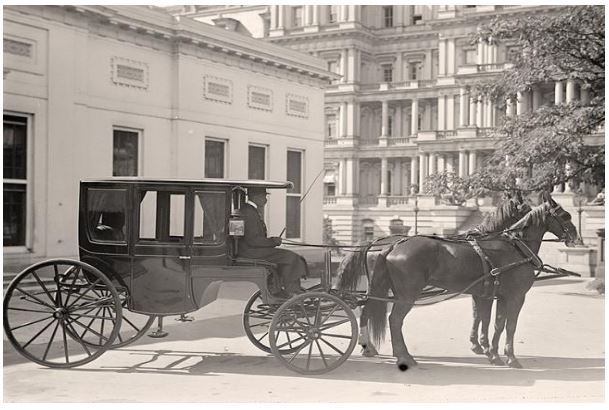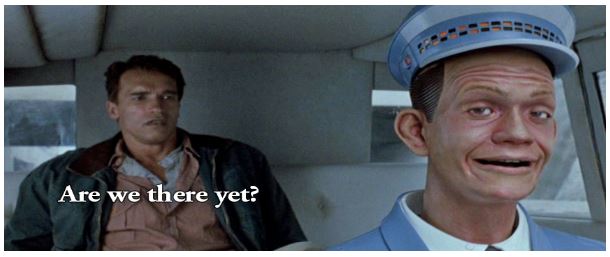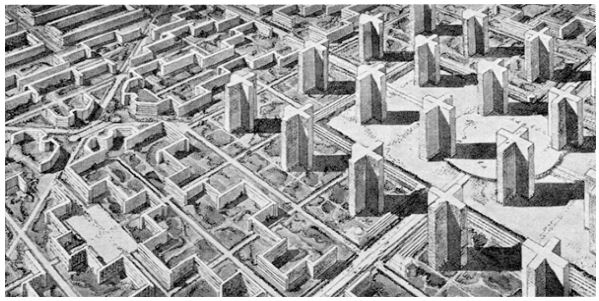Successful Implementation of a New Urbanism
“Overturning industries and redefining urban life, self-driving cars promise to be as disruptive and transformative a technology as the mobile phone” [1]. Now, it’s a matter of how?
The Driverless Carriage
The switch from horse-drawn carriages to motor cars provides an instructive analogy. Cars were originally known as “horseless carriages”—defined, like driverless cars today, by the removal of a characteristic. But having done away with horses, cars proved to be entirely different beasts, facilitating sub-urbanisation and becoming symbols of self-definition. Driverless vehicles, too, will have unexpected impacts.

Early 18th Century Horse drawn carriage, wheels were placed to the edge of the chassis for maximum comfort.
“Driver(less) is more”
The idea first appeared in sci-fi magazines in the 1930’s, but it wasn’t until the 1980’s when carnegie mellon university Navlab created the first truly efficient and autonomous vehicles. In the last 10 years autonomous or ‘driverless cars’ have come along way. In 2008, the autonomous movement hit its biggest achievement when a driverless Volkswagen car was able to recognise a stop sign and apply the brakes on its own. Between 2010 and 2012, Google developed and built a fleet of cars that drove across California avoiding traffic, pedestrians and obeying not just stop signs, but all road signs and signals without a single accident. Last year an unassisted BMW drove down the german autobahn and Toyota revealed a car which can be summoned by the owner remotely.
Despite some legal, safety, and ethical unknown’s stalling the emergence of self-driving cars. Automotive manufacturing companies Google, BMW, Tesla, Audi, Toyota and Mercedes-Benz are leading the chase to introduce driverless cars to the markets by the 2020’s. 1.2 million die in auto related accidents in the world every year. The US Department of Transportation estimated the statistical value of a single human life at $9.2 million. In 2012, the US reported 30,800 fatal car crashes. If Autonomous Vehicles saved even two-thirds of those crashes, with one life a piece, that would save the US economy over $187 billion.
Forbes contributor, Adam Ozimek, crunched the numbers further, estimating a savings of $41 billion from avoided medical and work loss costs, $189 billion from avoided medical expenses associated with survivable crash injuries, as well as $226 billion saved from no-injury crashes (e.g. scrapes and fender benders). Together, that’s $643 billion worth of avoided damage, suffering and deaths.
Here in Barcelona the main causes of road accidents, is reported to be lack of attention while driving, followed by not respecting minimum safety distances and making illegal turns. Computers should close out this aspect of human error and dramatically reduce fatalities as more driverless cars hit our roads.

Illustration of the new Mercedes-Benz autonomous F 015 available for sale in 2017.
At low speed, within the city, driverless vehicles will move in efficient patterns, eliminating bottlenecks, by following algorithmic patterns to destinations, creating more fluid circulation, changing the shape of cities to come. At high speed, the driverless car will be able to apply a direct course and communicate with other cars, fitting as many cars as possible safely on the road. Which raises the question of regulation: will we need to eliminate directions and stop signs, road markings, safety requirements and even driver licenses? Driverless cars may reduce accidents to such an extent that driving a vehicle could become too dangerous for humans and be outlawed.
Self-driving taxis could have utilisation rates of more than 75%. If so, a much smaller number of cars would be needed to move the same number of people around. “There will be fewer cars on the road—perhaps just 30% of the cars we have today [4]. Smart cars require smart roads. Incorporation of GPS technology into dynamic road systems will change the dualities of our infrastructure. “Solar roadways” may harness power and re-distribute to the electrical vehicles using that space.
KPMG reports released this in year in the UK predict by 2030, driverless cars will 320,000 new jobs and add £51 billion to the country’s economy. Already, £19m of Government money are under way to investigate how the technology can be incorporated onto Britain’s roads. The UK government has announced that driverless cars will be permitted on the road from January 2015. However, Until the majority of manual cars become obsolete and driverless technology reaches critical mass, experts can only speculate as to the how society as a whole will adapt to this technology.

An auto taxi from Paul Verhoeven’s Hollywood Blockbuster; “Total Recall” (1990).
The Carless City Movement
Ironically, a paradox now exists between this autonomous movement and the political agenda to rid our cities of cars. The pollutant and the space required to facilitate them creates a disconnect between the city, with many governments now proposing the car be cleansed from the city and used for leisure purposes only. Copenhagen city centre introduced pedestrian zones in the 1960s, and car-free zones slowly developed over the conceding decades due to public popularity. Madrid banned most traffic from central city streets, by 2020 Paris plans to ban diesel cars from the city, double the number of bike lanes and limit high traffic areas to electrical cars only. Norway’s capital, Oslo, has announced it will eliminate conventional automobiles from its city center by 2019, replacing them with electric cars — and thus slash its greenhouse gas emissions 50 percent by 2020 [7]. The new Dubai is becoming quickly choked with traffic, local rulers may opt for setting an income threshold for vehicle ownership. Barcelona has implemented electric car friendly power stations within the city centre as a part of the smart city strategy. And surprisingly, in 2012, Chengdu, China is lead by example, to design a car-free city for 80,000 people, incorporating a closed-loop environmental system.
The useable space, at an aggregate scale, a single family occupies (25m2 at home, and 25 m2 at work), making accommodation of car-parking spaces a non-obligatory requirement in the building regulations would play a part of reducing inner city congestion and shaping our streets. As cars speed up they require more space and complicated infrastructure what if the next paradigm of technology could make the existing complex infrastructure obsolete. Future driverless cars will be electric and arguably noiseless, removing air and noise pollution from our roads, resetting priorities.
The City in the Machine Age
In the past, for good or for bad, architects have had a tendency to embrace new technological shifts. Master’s plans have relied on transport infrastructure to determine the form of the city. ‘Good design’ for example by Ildefonso Cerdá in the 19th century, who belied a network-oriented approach far ahead of his time. The street layout and grid plan were optimized to accommodate pedestrians, carriages, horse-drawn trams, and urban railway lines. And the questionably, ‘Bad Design’; by Frank Lloyd Wright, whom in his 1932 book, “the disappearing city” proposed Broadacre City; where all important transport was done by automobile and the pedestrians can exist safely only within the confines of the one-acre plots where most of the population dwells. Le Corbusier’s questionable Radiant City and Niemeyer’s Brasilia, planned from scratch as ideal cities on the straight line in the age of the motor and the aircraft as king, with little regard for relation to human scale.
 Frank Lloyd Wright’s futuristic vision with drone technology, Broadacre city, 1932.
Frank Lloyd Wright’s futuristic vision with drone technology, Broadacre city, 1932.

Le Corbusier’s Radiant City, the city of tomorrow 1924-5. The unrealized utopian project was firmly set on a linear infrastructure format geared toward the car.
“Man walks in a straight line because he has a goal and knows where he is going; he has made up his mind to reach some particular place and goes straight to it. The pack-donkey meanders along, meditates a little in his scatter-brained and distracted fashion, he zigzags in order to avoid the larger stones, or to ease the climb, or to gain a little shade; he takes the line of least resistance. But man governs his feelings by his reason; he keeps his feelings and instincts in check, subordinating them to the aim he has in view. He rules the brute creation by his intelligence. His intelligence formulates laws which are the product of experience. His experience is born of work; man works in order that he not perish. In order (for) that production to be possible, a line of conduct is essential, the laws of experience must be obeyed. Man must consider the result in advance. But the pack-donkey thinks of nothing at all, except what will save him trouble.”
The City in the Elastic Age
As the new generation of cars will additionally be noiseless and pollution-less, meaning the end of the apartheid that currently separates cars from pedestrians and bicyclists for comfort, health or safety reasons. An urbanist theory by Bjarke Ingels Group (BIG), acting on behalf of Audi, for the Urban Future Award in Berlin, 2010, suggesting the ideal will be an elastic urban space that can expand and contract to accommodate peak traffic hours or allow a park or plaza to invade the car lanes to fit the demands and desires of its citizens. Blurring the line between infrastructure and structure. Rigid circulation space will morph to a fluid distribution, much like the chaotic traffic patterns currently seen in developing countries, like Vietnam or India, but with the safety of sensor safety technology.
 BIG’s Interpretation of an autonomous future in the current urbanism (on behalf of Audi), complete with LED smart roadways in the city.
BIG’s Interpretation of an autonomous future in the current urbanism (on behalf of Audi), complete with LED smart roadways in the city.
Eventually, vehicles, will move and interact in a spontaneous swarm-like fashion, following pre-programmed paths similar to those found in nature, influencing non-linear and self-organising, urban networks. Supporting Frei Otto’s argument at that human spontaneous networks of urbanity follow similar patterns to ones formed in nature, through the structures of leaves, insect colonies or soap bubbles.
“Driver(less) is more”: Successful Implementation of a New Urbanism is a project of IAAC, Institute for Advanced Architecture of Catalonia developed at Master of Advanced Architecture in 2015/2016 by:
Student: Robert Staples
Faculty: Gonzalo Delacamaca